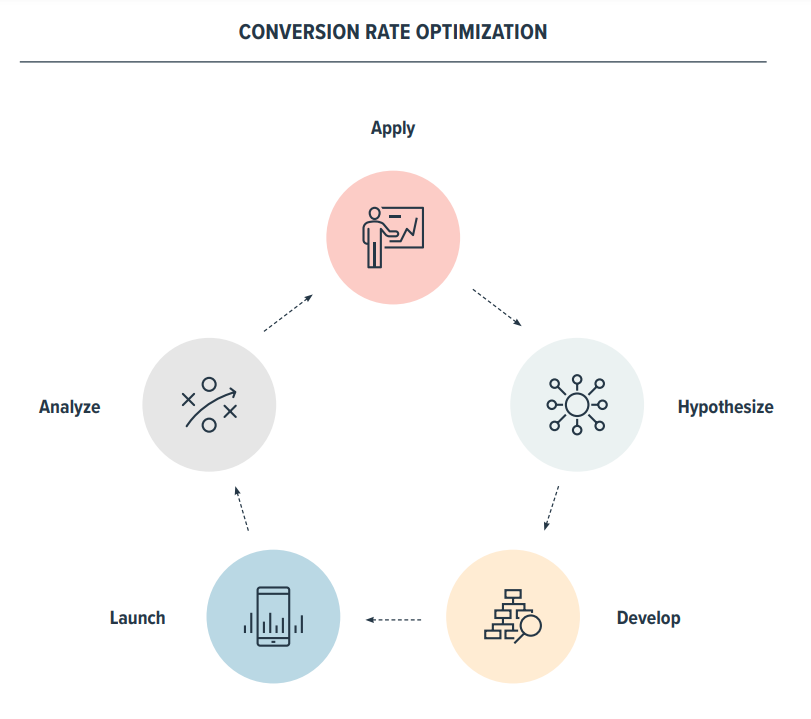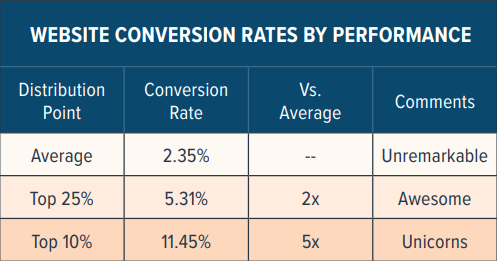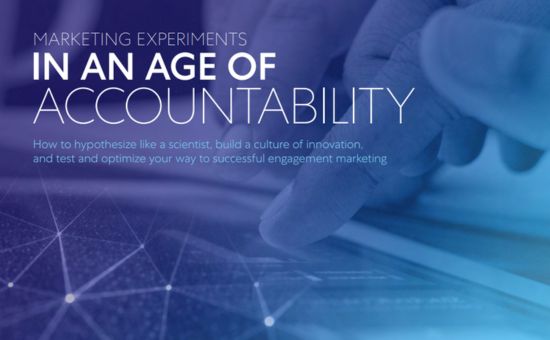Turn Visitors Into Customers: The Performance Power of CRO | WPROMOTE
Digital Marketing
Your website serves as the core of your digital marketing strategy, yet many fail to fully optimize its potential. While paid media campaigns undergo continuous optimization, websites often receive occasional redesigns, missing out on potential performance improvements. Neglecting site optimization means leaving money on the table.
Overcoming these challenges calls for Conversion Rate Optimization (CRO). It involves blending web analytics, UX research, and iterative A/B testing to understand customer behavior and enhance key website metrics. CRO can significantly boost efficiency and effectiveness across marketing channels, leading to increased conversions and improved campaign performance.
This guide ensures your website is primed to deliver efficient campaigns, higher conversions, and lower acquisition costs, maximizing the impact of your efforts.

Getting Started: Setting Up Your CRO Program
Conversion Rate Optimization (CRO) is a systematic approach that evolves over time. To begin, gather initial data for informed testing on your site. Establish a continuous flow of new data from tests to fuel the CRO program. While it takes time, CRO is a reliable strategy for consistent marketing improvement.
Here’s how to implement CRO effectively:
- Testing Framework: Develop a testing framework by conducting an audit to understand user behavior. Identify priority areas for improvement based on a combination of aesthetics, quantitative performance data, and business goals.
- Problem Definition and Hypothesis: Define the problem and formulate a hypothesis for improvement. Collaborate between site and creative teams to design a performance-driven test that provides insights into user behavior.
- Test Launch: Launch the test and monitor results throughout the experiment. Report on preliminary findings and adjust testing strategies based on real-time data. Tests may run for two weeks to two months, depending on traffic and differences between A/B options.
- Data Collection and Analysis: Once a test is completed, collect data for analysis. Determine statistically significant results, make recommendations, and implement changes on your site.
- Continuous Improvement: CRO has no endpoint. Use the results to inform new testing ideas and continually iterate the process. This ongoing journey ensures a perpetual enhancement in marketing performance.
By following these steps, you can establish a robust CRO program that consistently improves website performance, campaign efficiency, and overall marketing effectiveness.
Here’s how to build a successful CRO program:
- Data-Driven Approach: CRO must be driven by relevant, real-time data. Base your strategies on data to test hypotheses and achieve tangible results. Define appropriate Key Performance Indicators (KPIs) for each test, avoiding assumptions and sometimes requiring additional tagging or metric creation. Having a data science and analytics engineering team from the start enhances data accessibility, agility, and scalability.
- Creative Problem-Solving: Long-term conversion success stems from multiple iterative changes rather than a single alteration. Be creative in finding solutions based on audience behavior, tracking where they go, what they do, and why. While certain aspects of your website may be resistant to change, embracing improvements that challenge the status quo is crucial for CRO success.
- Consider the Full Funnel: Evaluate performance by considering the entire customer journey. CRO extends beyond click-through improvements on landing pages; it uncovers opportunities to enhance the customer experience at every funnel stage. Optimizing the on-site experience positively impacts prospecting, post-purchase, and the overall customer lifecycle, maximizing marketing efficiency across channels.
Common CRO Mistakes and Best Practices:
Mistakes:
- Treating CRO as a one-time investment.
- Decisions are not driven by data.
- Misleading messaging or content.
- Using generic Calls to Action (CTAs).
- Prioritizing products over people.
Best Practices:
- CRO is an ongoing, perpetual process. Run tests regularly to identify optimization opportunities for sustained site improvement and enhanced performance.
- Avoid limited-time or one-time CRO investments; recurring investments yield continuous benefits.
- Base decisions on data-driven insights to ensure effective and informed optimizations.
- Craft messaging and content that aligns with transparency and clarity, avoiding misleading information.
- Develop personalized and compelling CTAs tailored to your audience to drive engagement.
- Prioritize user experience, understanding that people-centric approaches often outperform product-centric strategies.
Consider the analogy of social campaigns: just as you wouldn’t stop optimizing them after seeing initial improvements, maintain a commitment to continuous testing and enhancement for enduring success.
Allocate the budget as a recurring investment rather than a one-time expense. According to Wordstream, the top 10% of sites achieve an impressive 11.45% conversion rate compared to the average of 2.35%, emphasizing the substantial revenue boost achievable through effective CRO practices.

Explore in-depth insights on the power of CRO and elevate your site’s performance. Unlock the full guide and download it now to enhance your digital strategy!
The Table of Contents of “Turn Visitors Into Customers: The Performance Power of CRO” Guide:
- Getting Started: Setting Up Your CRO Program
- How do you start implementing CRO?
- How do you build a successful CRO program?
- What are some common mistakes?
- Full Power: Combining CRO and Site Redesigns
- How should CRO work in tandem with site redesigns?
- What are the major benefits of a CRO program during a redesign?
- Is it time for a full-scale redesign vs. deploying CRO?
- Beyond Channels: Maximizing Paid Media Performance
- How can CRO and paid media work together to make campaigns more effective?
- How can CRO help improve paid media performance if marketing budgets are tightening?
- What are the first steps to align paid media and CRO?
- It’s Time: Make Continuous Optimization A Priority Now
Number of Pages:
- 24 pages
Pricing:
- Free
Warning: Undefined array key "sidebar_ads" in /home/dmc/public_html/wp-content/themes/DMC/functions/helpers.php on line 824






